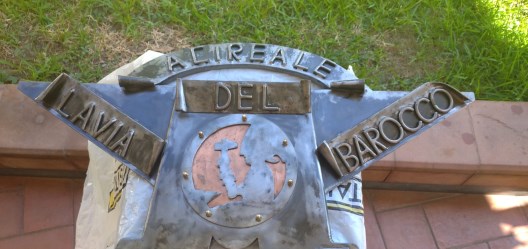The second edition of “La Via del Barocco” Culture, Art, Games and Folklore is underway, an event that sees painters, sculptors, performances of various genres. The event will begin with the unveiling of the commemorative coat of arms, on the afternoon of 14 September at 4 pm, in via Dafnica in Acireale and will end on the morning of 17 September 2023 at 12 pm. The setting for the event will be the baroque via Dafnica from the crossroads with via San Martino up to piazza Pasini. The event will be presented at a press conference tomorrow, Wednesday 13th, at 11 am, in the press event room of the Municipality of Acireale. The mayor Roberto Barbagallo, other municipal administrators, representatives of the artisans and the artists protagonists of the various events within “La via del barocco” will be present.
One of the main themes is “The Iron Ring” which will involve master forgers from all over Europe. The masters of wrought iron will have the opportunity to show their art with the sound of hammers on anvils, to create their works in front of visitors curious to observe such mastery. We dedicate a few passages of writing to the Iron Ring to talk about history and remind us how the culture of Acireale has been at the forefront of this art in the past and remains so in the present.
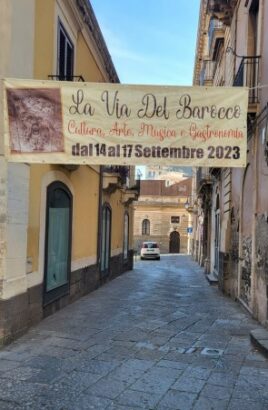
The way of the Baroque
Wrought iron was certainly the first type of steel discovered by chance as a by-product of copper processing. Wrought iron, after the processing with which it was obtained, had to be beaten to remove the slag produced by the mass of external material. The first creations of artefacts produced with iron date back to the mid-third millennium in the civilizations of ancient Mesopotamia and Egypt. Once its use was appreciated, it was decided to use it to arm armies with new super resistant weapons. And the use of iron working for war purposes in the world of craftsmanship spread from the Middle East.
The Hittites used it and only around the year 1000 BC. wrought iron reached central and western Europe, becoming the natural substitute for copper and bronze. After the 8th century BC. the Greeks understood its effectiveness and began to equip their armies with swords and spears, made with wrought iron. The material iron, which was widely available in nature, despite the fact that it could not be tempered, is enriched with carbon through a carburizing process, which makes it increasingly resistant. For several centuries iron was used exclusively for the construction of tools and weapons.
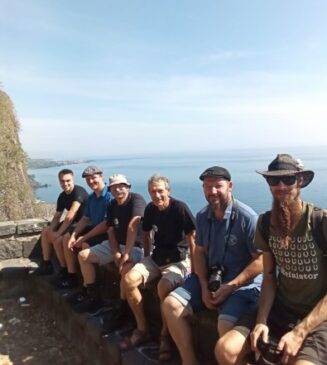
Multiple uses of wrought iron Towards the end of the Middle Ages, following numerous discoveries, it began to be used in various alternative uses. It began to be used to cover windows, doors and buildings to ensure adequate security linked to protection against attacks by thieves and enemies. The period in which noble families began to use wrought iron for decorative purposes and of architectural value was arrived in Western countries . Some of these works have survived to the present day and are available to be admired in many European monuments. Examples of wrought iron art are Notre Dame Cathedral in Paris and Winchester in England. The peak of the use of wrought iron throughout the world was reached around the 16th century. In this period, craftsmen created increasingly elaborate and artistic constructions. Iron is replaced today by stronger materials.
In the 18th century the demand for this raw material reached its maximum demand and the construction of gates and railings was becoming established throughout Europe. Around 1860 iron began to be used for armored warships and for the construction of railways. For some years now, wrought iron has no longer been produced in the same quantities as in previous eras. Today, new, stronger materials, such as mild steel, replace iron.
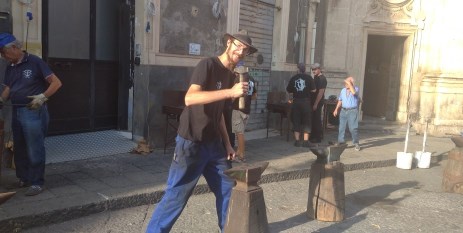
Though some derivatives of this precious natural mineral are mostly irreplaceable, given that most of the iron works are produced by hand using imagination, creativity and anvil and hammer. Despite the great effort, the hands always black, not to mention the face, the craftsmen are always “immersed” in the heat of the forge that burns coal to fuel it. With the bellows, possibly operated by hand or pedals, which serves to keep the fire always alive. For this reason, the creations of home furnishings, headboards, railings, gates, lanterns, friezes and coats of arms, furniture and other ornamental works are highly appreciated. The wrought iron craftsman becomes a “master ironsmith”. The craftsman specializes in the forging of artistic wrought iron, becomes a “master ironsmith”. Wrought iron craftsmen become the heirs of those blacksmiths who decide to pass down this fascinating and centuries-old craft. A profession that lies entirely in the manual skill of the worker.
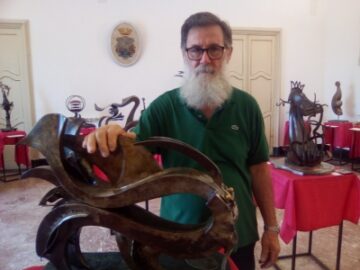
Acireale presents an exception as it is the birthplace of Giuseppe Contarino, son of a family dedicated to the craft of “shoemakers” for a generation. Thanks to the scholastic training he learned at the “Città del Fanciullo”, steals the profession from his teachers: Mastro Gresti, “occhi niuri”, Mastro Ragonesi “panzitta”, the prof. Raffaele Greco. He undertakes and improved the art of the master ironsmith until reaching an excellent level, arriving to be classified among the best master ironsmiths in Italy. The continuity of the craft also in the Contarino household will constitute a tradition, given that Mastro Giuseppe’s artisan work is continued by his son Davide.
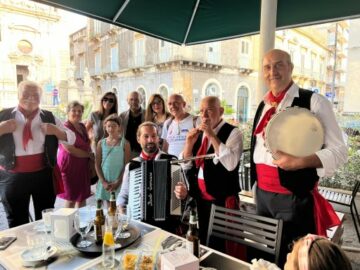
It must be said that Acireale is not new to this ancient profession. In fact, the Master Ironsmiths Turi Paradiso and his son Angelo should be remembered. The latter, author of the gate of the real chapel of Santa Venera present inside the Cathedral of Acireale, built in 1914. The young Paradiso is also the author of the magnificent gate that surrounds the staircase of the cathedral of San Giorgio in Ragusa Ibla, installed around to 1900. Giuseppe Contarino, knight of the Republic, is today “knight of the Order of Merit of the Italian Republic”. The title awarded to him at the age of 44 makes him one of the youngest knights in Italy. Honor given to him for having distinguished himself in his art and for the mastery with which he was able to create his “creatures”, they are scattered throughout the world. The knight Giuseppe Contarino reaches another milestone on 11 July 2023 which enriches the already extensive list of his artistic career.
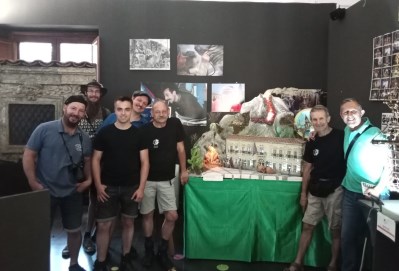
A philatelic dedication wanted by the Italian State, belonging to the thematic series “The Natural and Landscape Heritage” dedicated to the Italy of the sea, tourist series: Mazara del Vallo, with the issue of a stamp distributed by Poste Italiane. The stamp depicts a monumental work created by Contarino and his son Davide, entitled “Monument to the fisherman”.
Talking about a master blacksmith means finding various arts in a single person: a blacksmith must be not only a manual worker of the material but also an architect, a mathematician, a good engineer, an artist who sees beyond the material he has in his hands to create the work of art. Wrought iron furniture is an ideal choice, both for decorating the outside (resistance to bad weather) and the inside (durability over time); and suitable for every style. The multiple uses for accessories allow, in fact, to fully satisfy people’s needs and tastes. This material will not be phased out any time soon, but will certainly continue to have great value for years to come.
Giuseppe Lagona
